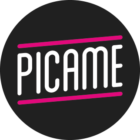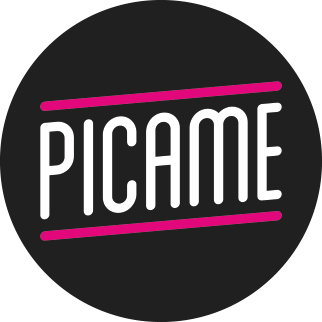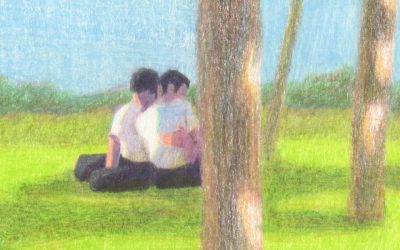[English version along the post]
Carta, matita, computer? Neanche a parlarne. Gli strumenti di Jacopo Rosati sono più simili a quelli di un sarto che a quelli di un illustratore. Una tecnica particolare e sorprendentemente versatile che gli consente di lavorare per importanti clienti internazionali, ritagliandosi – letteralmente – un posto nell’Olimpo dei talenti italiani emergenti. Oggi Jacopo apre le porte del suo studio, in esclusiva per i lettori di PICAME.
Ciao Jacopo, benvenuto su PICAME. Non abbiamo mai avuto un header così morbido!
Peccato non si possa toccare! Era da molto tempo che volevo realizzare questa immagine ma non ne avevo mai avuto l’occasione, il vostro header è stato un’ottima opportunità per concretizzare questa idea.
Quanto conta la capacità di sintesi nel tuo lavoro?
Secondo me dipende dal tipo di commissione: è importantissima quando si lavora per quotidiani o riviste, in questo caso bisogna sintetizzare in un’unica immagine articoli lunghi diverse pagine o perfino interi libri. Ci sono invece commissioni che necessitano rappresentazioni a contenuto informativo o commerciale nelle quali cerco di essere più comprensibile ed immediato.
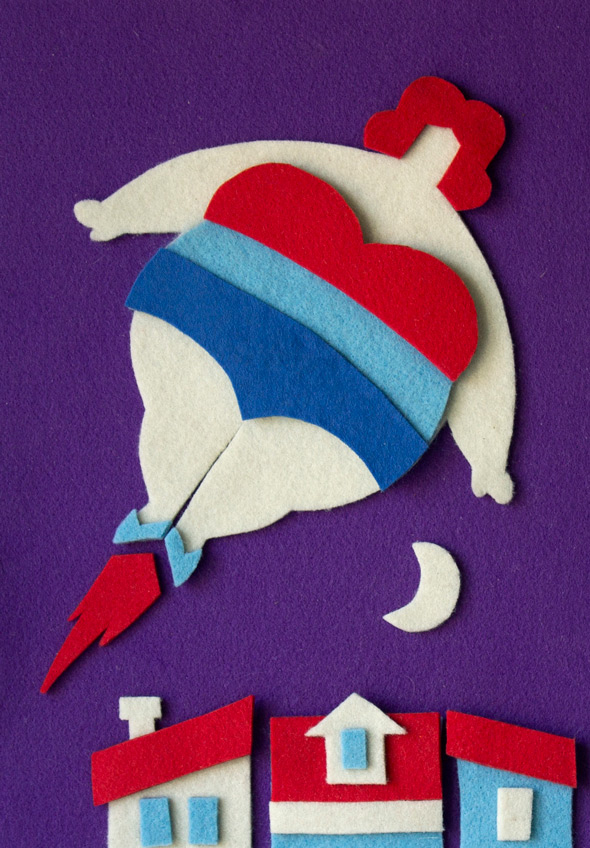
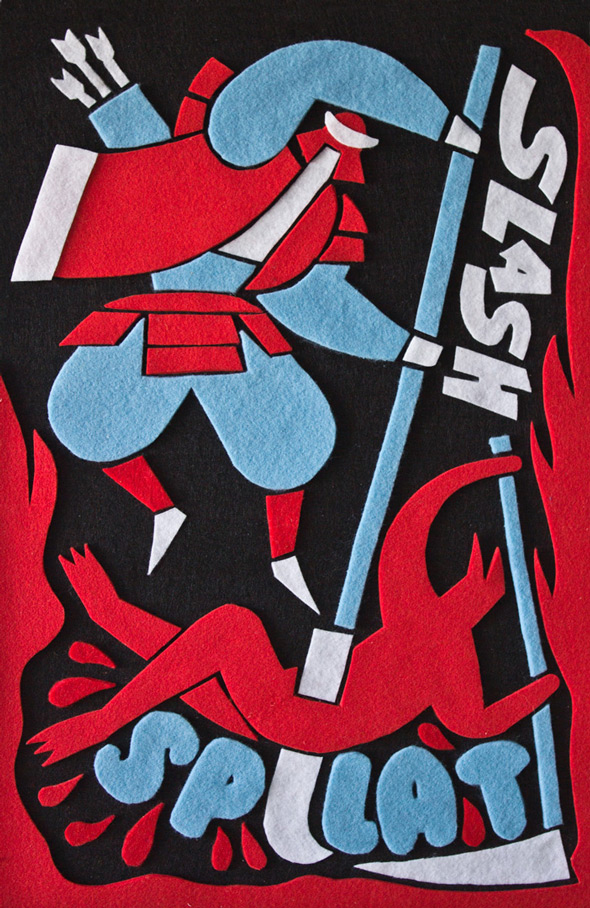
Ad un certo punto il tuo percorso creativo ha subito un brusco cambiamento di rotta. “I feel that this technique doesn’t represent me anymore“, questa frase scritta sul tuo profilo Facebook qualche mese fa ha segnato il passaggio definitivo dalla grafica vettoriale (con cui realizzavi complicate e dettagliatissime illustrazioni) ai collage in feltro. Un processo tutt’altro che graduale, quasi un rifiuto. Cosa è successo?
Più che del vettoriale mi ero stancato della rappresentazione assonometrica iper dettagliata. Non riuscivo più a gestirla perché, per quanto mi riguarda, la trovo estremamente laboriosa da realizzare, soprattutto se lavori da solo. Non mi divertivo più, disegnare era diventato quasi un peso, un obbligo. Quindi ho preso tutto quello che avevo fatto, l’ho appallottolato come una cartaccia e l’ho buttato nel cestino preparandomi a ricominciare tutto da zero. Fra qualche anno forse troverò un filo conduttore che mi permetterà di accettare il mio modo di essere che mi spinge a realizzare cose molto diverse tra di loro.
Ti ha spaventato abbandonare la tecnica che ti ha consentito di crearti un nome e di ricevere le prime committenze da parte di clienti importanti?
Moltissimo ma nel lavoro mi piace rischiare. Avendo iniziato a lavorare in uno studio di grafica sono stato abituato a disegnare con stili molto diversi in base alle necessità, quindi non è stato molto complicato cambiare segno. È stato sicuramente molto più difficile acquisire una certa familiarità con la fotografia, dato che questa occupa una parte importante nel processo che porta un collage tridimensionale a diventare un’immagine digitale stampabile su una superficie bidimensionale come la carta. L’illuminazione è la protagonista della fotografia perciò mi è servito l’aiuto di qualche amico fotografo per imparare ad allestire correttamente un piccolo studio fotografico.
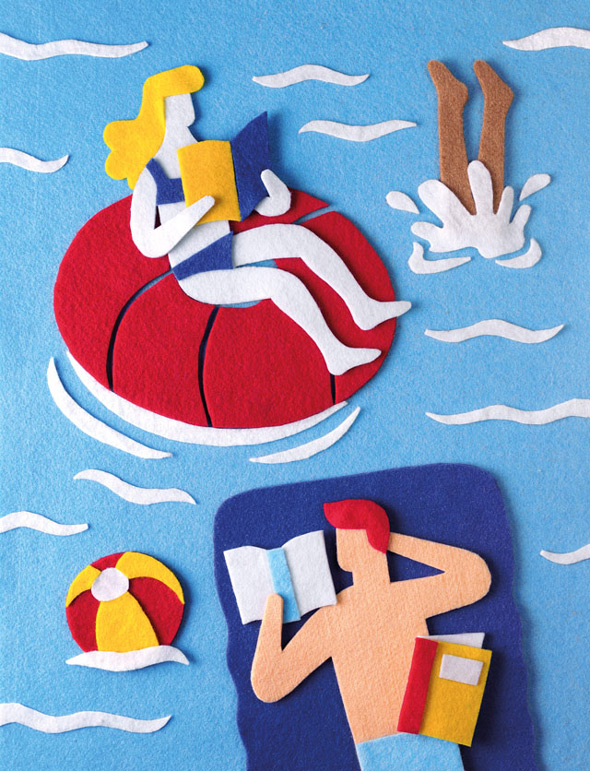
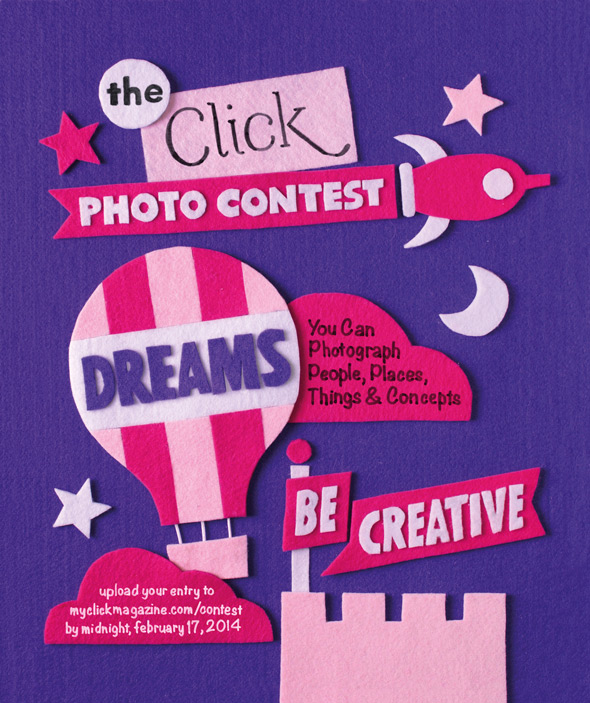
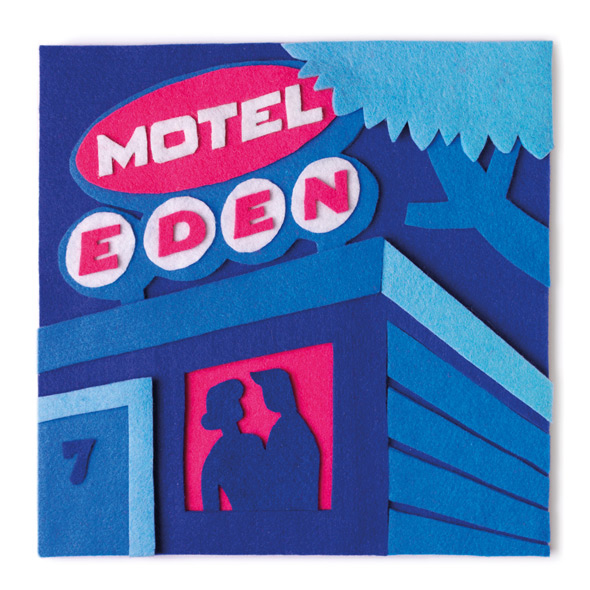
Pensi di aver trovato finalmente la tua dimensione creativa o prevedi di continuare a sperimentare con nuove tecniche e nuovi materiali?
Mi sta tornando un po’ di nostalgia per la serigrafia, quindi ho già in mente cosa poter realizzare in futuro cercando sempre di mantenere lo stesso stile grafico che sto usando adesso. Penso comunque che prima o poi anche il feltro comincerà a stancare il pubblico e forse anche me, quindi preferisco sempre sperimentare senza fossilizzarmi troppo su un’unica tecnica. Infatti è da qualche anno che affianco il mio lavoro da illustratore a quello di designer nella progettazione delle chiavette USB Tribe, perciò il passaggio quasi quotidiano dall’illustrazione pura al disegno tecnico/industriale, pur mettendomi fortemente alla prova, mi dà anche la possibilità di interpretare ruoli diversi e questo mi permette di non annoiarmi mai.
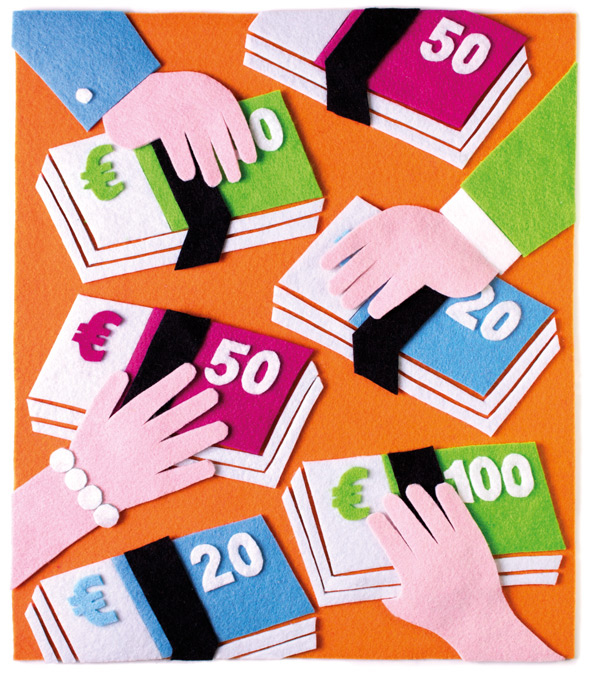
Qual è il tuo workspace ideale e di quali oggetti/strumenti non puoi fare a meno?
Il mio spazio ideale sarebbe asettico e maniacalmente ordinato, ma dovendo lavorare quasi ad un livello artigianale il tavolo dove disegno è l’esatto opposto.Non posso fare a meno delle luci da studio, della mia fotocamera, di un treppiede fotografico, di un armadio pieno di rotoli di feltro, delle forbici gigantesche, di vari tipi di colla e di una scatola dove conservo tutti gli scarti di feltro che non userò mai. Insomma, un sacco di roba!
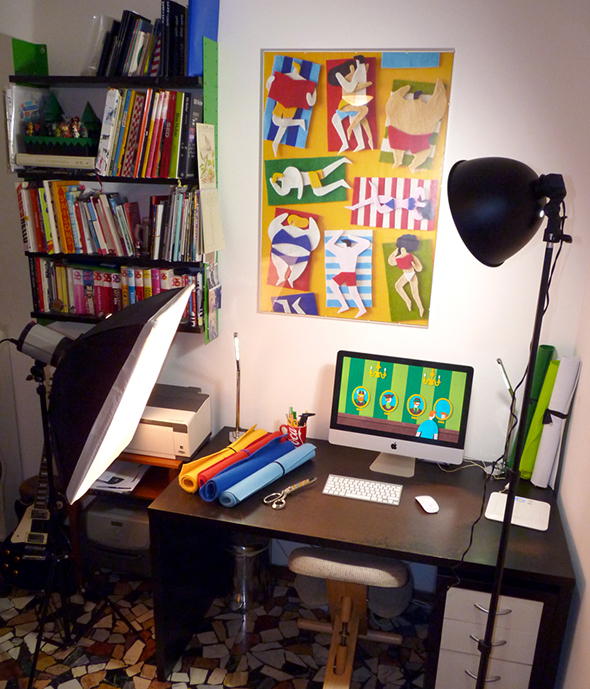
Che rapporto hai con gli originali dei tuoi lavori?
Inizialmente ero molto geloso e dubbioso, soprattutto perchè non sapevo come poterli incorniciare e presentare in un modo che non fosse troppo rozzo. Adesso ho trovato una buon laboratorio che realizza cornici su misura e quindi sto cominciando a vendere le prime opere originali.
La colonna sonora perfetta per lavorare?
Cerco di rimanere il più aggiornato possibile ascoltando qualche ora di radio o di playlist su Spotify, mi piace ascoltare le novità anche se poi mi rifugio sempre nei classici. Poi ci sono tutti gli album di inizio 2000 che mi sembrano usciti ieri e invece sono vecchi di dodici anni. Queste cose, insieme ai primi capelli bianchi, cominciano a farmi sentire vecchio.
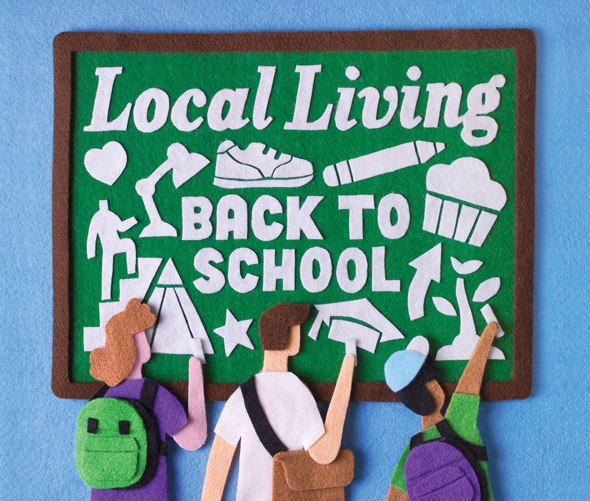
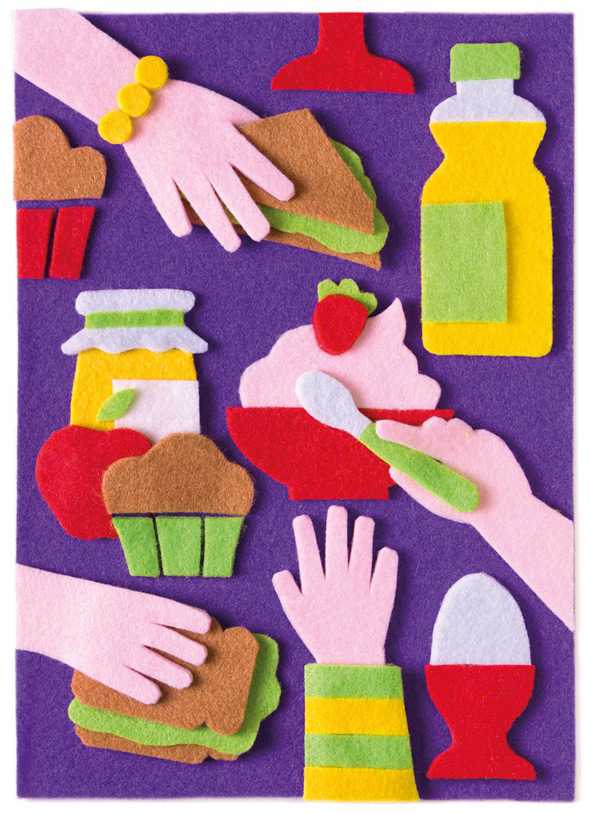
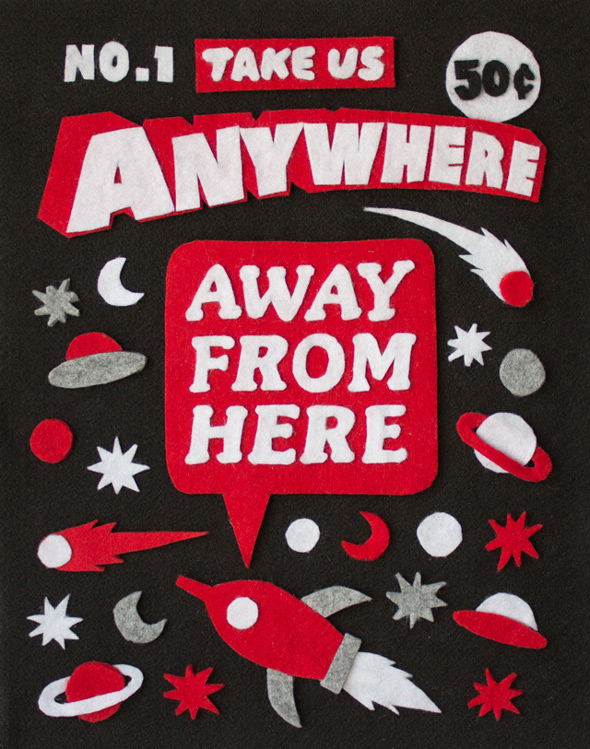
—
ENG
Hello Jacopo and welcome to PICAME. We’ve never had an header so soft!
It’s a pity that you can’t touch it! It’s been a long time since I wanted to create this illustration but unfortunately I’ve never had the chance to do it, your header has been a great opportunity to concretize this idea.
How much is the talent of summary important in your job?
It depends by the work: it is very important when you work for magazines, in this case it is necessary to summarize long articles, several pages, sophisticated sentences and also whole books in one single illustration. There are also works that require professional presentations in a commercial manner in which I try to be more clear and immediate.
At a certain point your creative way has changed many facts from the root base. “I feel that this technique doesn’t represent me anymore”. This sentence written on your Facebook profile a few months ago has marked the passage from the vector graphics to the felt collages. Not a step by step process, but almost a rejection. What’s happened?
It is not about the vector graphics, I had enough about the hyper detailed axonometric representation. I couldn’t do it anymore because it was too much complicated to do it only by myself. I didnt’t enjoy it anymore, drawing became like a duty so I took all the things I have done, I threw away my scratch and I started to plan a new project from the first step. In a few years maybe I’ll find a stable road that will allow me to accept my way to realize and accomplish my idea between them.
Have you been afraid to leave the technique which allowed you to create your name and made you able to receive your first important commitments?
Absolutely, but I usually like to risk. I started my career working in a graphic studio drawing with different styles, depending on what clients demand so it hasn’t been so complicated. It has been harder to work with photography: the photography is a delicate work which transforms a combinations of colors into a digital image printable in a planar surface like the paper. The lights are the characters of the photography, and for that I needed the help of some friends to learn to set up a photographic studio.
Do you think that you had already found your ideal career or would you like to test new techniques and materials in order to accomplish more professional goals?
Actually I miss the silk-screen printing so I have already focused what to realize in my future, trying to keep the graphic style at my header subject. By the way I think the felt way will be old, so i’m always looking for new techniques. For quite a few years I have been working also as a designer, one of my accomplishment project is called USB Tribe Keys: the daily bridge from the pure illustration to the technical-industrial design, putting myself on the test, gives me the possibility to interpret different roles and to never get bored.
What’s your perfect workspace and which object must always be with you in order to finish your project?
My ideal work space must be very organized but actually my desk is the opposite. I couldn’t live without the studio lights, my camera, the tripod, the wardrobe full of felt rolls, the giant scissors, the different kind of glue and the boxes where I keep the reject felt I never use. A lot of staff!
How do you deal with your artworks?
Do you keep them for yourself, give them as a gift or sell them?
At the beginning I was so worry to present my artworks without a well handcraft finish because I didn’t know how to frame them without making them raw. Now I have discovered a place that is doing a custom-cut frames and happily I started to sell my original works.
What’s your favorite soundtrack while you are working?
I’m trying to be updated listening to the radio or playlist on Spotify for a few hours a day. I like listening to the new songs even if I’m more addicted to the classic ones. There are also the top albums of 2000’s, they seem to be published yesterday but they are twelve years old. This atmosphere and my first white hair make me feel old.
Translations: Francesca Dell’Omo
